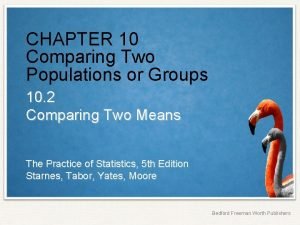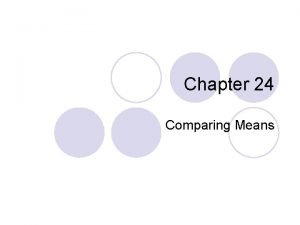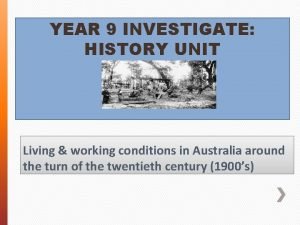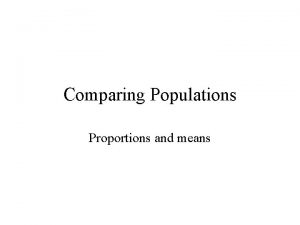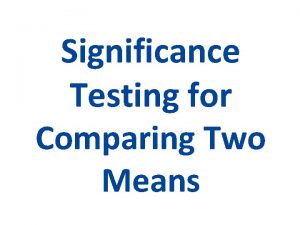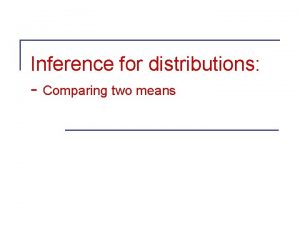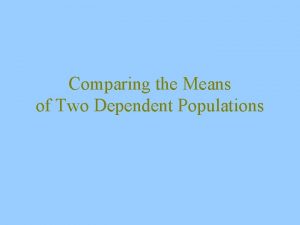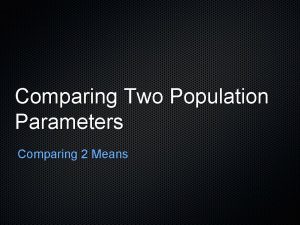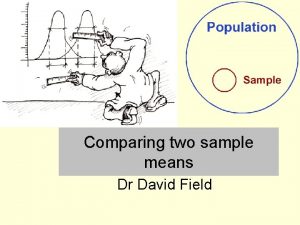Working with Two Populations Comparing Two Means Conditions









- Slides: 9

Working with Two Populations Comparing Two Means

Conditions for Two-Sample Inference • The data are from two independent random samples • Normality – Sample size must be at least 30 for each group • Each population needs to be at least 10 times their respective sample size.

Confidence Intervals • Draw two independent random samples of size n 1 and of size n 2 from normal populations. The confidence interval for m 1 – m 2 is: One-sample mean Two-sample mean

Test of Significance To test the hypothesis Ho : m 1 = m 2 One-sample mean Two-sample mean

Degrees of freedom • We never want to over estimate the accuracy of a t procedure. • Choose n – 1 of the smaller sample size if a calculator or computer program is unavailable to determine the degrees of freedom.

The beauty of the graphing calculator • The distribution of the two-sample t statistic is close to the t distribution with degrees of freedom df given by:

Example A dietician has developed a diet that is low in fats, carbohydrates, and cholesterol. Although the diet was initially intended to be used by people with heart disease, the dietitian wishes to examine the effect this diet has on the weights of obese people. Two random samples of 100 obese people each are selected, and one group of 100 is placed on the low-fat diet. The other 100 are placed on a diet that contains approximately the same quantity of food but is not as low in fats, carbohydrates and cholesterol. Each person, the amount of weight lost (or gained) in a 3 -week period is recorded. The results are below. Low-Fat Diet Other Diet Mean weight loss 9. 3 lbs 7. 4 lbs Sample variance 22. 4 16. 3

Form and interpret a 95% confidence interval for the difference between the population mean weight losses for the two diets. 2 sample t-interval df = 80 (chart method) We are 95% confident that the true difference in means lies between 0. 66 and 3. 14 pounds between the low-fat diet and the other diet.

Test to see if there is a difference in weight loss for the two diets. 2 sample t-test (same conditions as 2 sample t-interval from part a) a =. 025 df = 80 (chart). 001< p-value <. 0025 We reject Ho. Since the p-value < a, there is enough evidence to believe the low-fat diet mean weight loss is different than the other diet.
 Chapter 10 comparing two populations or groups answer key
Chapter 10 comparing two populations or groups answer key Chapter 10 comparing two populations or groups
Chapter 10 comparing two populations or groups Chapter 24 comparing means
Chapter 24 comparing means Comparing means in excel
Comparing means in excel Chapter 24 comparing means
Chapter 24 comparing means Programer job description
Programer job description Work condition
Work condition Capitalism def
Capitalism def Living and working conditions in australia 1900
Living and working conditions in australia 1900 Fair working conditions
Fair working conditions

